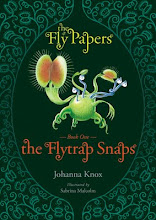We've just moved from Wellington to the lovely little Wairarapa town of Featherston - and I do believe it may be the Purslane Capital of the World.
Back in Wellington I was excited when a lone purslane plant decided that of all the places in the neighbourhood it could sprout, it would choose my garden. I never found another in our vicinity.
Here in Featherston, purslane ranges across parking lots and around railway tracks, and has carpeted several of our garden beds.
I'm excited because purslane is a uniquely yummy and nutritious vegetable. It's full of all sorts of good stuff, but most notably has the highest known Omega-3 content of any green. (The Omega-3 it's particularly rich in is alpha linolenic acid, which our bodies can't manufacture, and must get from our diets.)
Eating purslane
You can eat the leaves, the smaller stems, and the flowers. (Though some recipes call for only the leaves.)
It has a sour, salty taste, like
beach spinach. That sourness indicates its oxalic acid content so - as with spinach, beach spinach, rhubarb, and wood sorrel - avoid it if you have kidney stones, gout, rheumatoid arthritis, or other health issues where you must beware oxalic acid.
It's unusual in the world of commonly eaten greens in that it's a succulent - its fat, juicy leaves have evolved to store moisture and nutrients over long periods of time. Like other succulents it's also full of mucilage - a protective slippery slime.
Slime doesn't sound very appetising, but I have found it an addictive food texture, a taste I acquired rapidly once I started on it.
Purslane can be eaten raw, and complements cucumber especially nicely, for example in
salads and raita.
It's also a lovely addition to many cooked dishes. Fry it quickly to retain its satisfying volume and firmness, or cook it for longer to give it an almost melt-in-the-mouth quality.
Because it's so widespread around the world, there are
recipes for its use from many countries.
Once you pick purslane, use it straight away, or to keep it fresh and juicy for more than a few hours, trim off the roots and stand the stems in water.
More on mucilage
Mucilaginous plants like purslane are used widely in herbal medicine around the world, as mucilage soothes and protects. (Plant mucilages also often contain antiseptic chemicals).
These plants can be used externally on wounds, burns and stings. They're also consumed to soothe the respiratory and digestive tracts. But that's not all. When it comes to digestion, mucilage doesn't just soothe - it both absorbs water and creates bulk. That's good for, as they say, keeping you 'regular'.
Rellies
It's in the same family as
miner's lettuce, which many people also know either as a weed or a food. While
purslane likes hot summers, its cousin, miner's lettuce, prefers cool, shady winter and spring temperatures.
Purslane on google images
Buy purslane seeds if you can't find any growing wild






5 comments:
Here in Lyttelton we have loads of miners lettuce growing wild in the hills. All the tracks are shut because of unsafe boulders so we are pleased we got some going in the garden.
I haven't come across purslane yet. Will keep an eye out now though, sounds interesting.
Interesting - I hadn't thought about the impacts of the earthquake on foraging. :(
Good luck finding purslane, Nikki! :)
Crikey. The Purslane is everywhere in Kimbolton in the North Island.
Our house up there that we rent out now has it everywhere. It got pulled as a weed. If ONLY I had Known..lol
Just found your blog via http://rawzealand.org.
I have started to follow you as my interest other than eating is dying cloth with foraged plants/leaves.
Regards Phillipa
best news article provides best updates Hindu Alert
Post a Comment